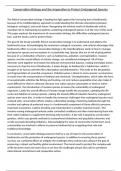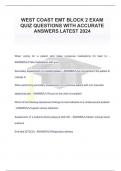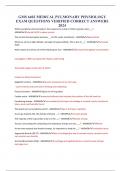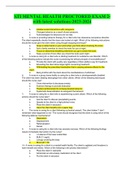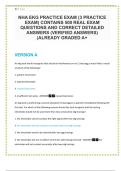Summary
Summary Conservation Biology and the Imperative to Protect Endangered Species
- Institution
- AQA
The broad discipline of conservation biology is concerned with the study and protection of biodiversity, especially in light of the risks that human activity poses. The core of conservation biology is the need to safeguard endangered species, highlighting the significance of preserving the delicate...
[Show more]
